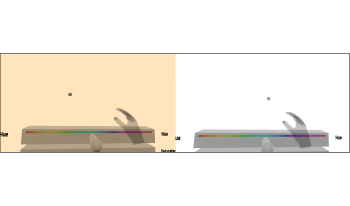
Corresponding colors data are necessary to evaluate and improve chromatic adaptation models. Virtual reality (VR) technologies offer a promising and flexible tool for studying chromatic adaptation. This work revisits the classic technique of haploscopic matching to collect corresponding colors data using VR. A virtual environment was designed in which the same visual scene was lit with a light of a different chromaticity for each eye, and an exploratory study was conducted, collecting corresponding colors data from 10 participants (5 color stimuli, 3 trials for each). The averaged CIEDE2000 standard deviation for individual observers, across 5 colors, was 2.94, showing adequate precision despite the low amount of repetitions. This work represents a proof of concept for an efficient and realistic VR haploscopic matching paradigm, which may be extended by future studies employing display color characterization and greater numbers of participants and trials.